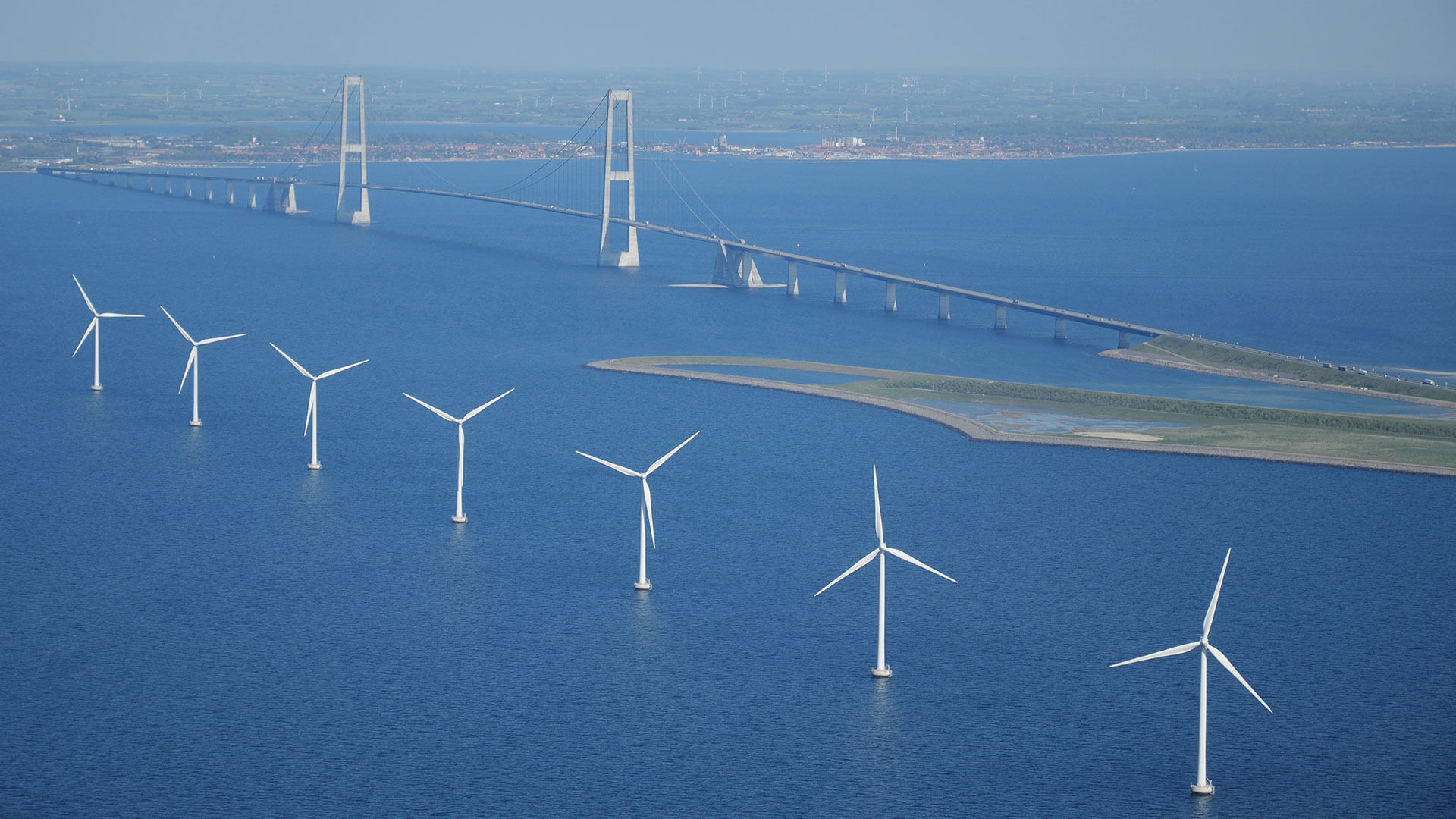Wind energy and energy islands
To achieve a fossil fuel-free society that meets our increasing need for energy, it is necessary to expand the capacity of renewable energy technologies. In this connection, wind energy remains the cheapest energy technology we have available.

What is wind energy?
Wind energy is pollution-free energy produced exclusively by means of wind from wind turbines that can be set up both on land and at sea. Carbon is emitted during the production, transport and installation of wind turbines, but this emission is typically earned back within 6-12 months of a wind turbine’s service life. Wind turbines erected today have a design life of 25 years, but have often been shown to last for 30 years or more.
The global green transition is underway, and wind turbines are increasingly being used as a replacement for fossil-fuel power stations. According to the Danish Energy Agency, more than 40 per cent of Denmark’s total electricity production derives from wind turbines. Thus wind energy plays the key role in the transformation of Denmark’s energy system, and in the efforts to ensure that Denmark is carbon-neutral by 2050.
Today, wind turbines and wind energy account for less than five per cent of the total electricity produced in the world. However, the International Energy Agency estimates that this figure may be as high as 36 per cent by 2050. This will require that we continue to invest in wind turbines and wind technology in the future, so that we can become even better at utilizing wind power—not just in Denmark, but globally.
How does a wind turbine work?
The wind causes the wind turbine’s blades to revolve. This transfers energy to the blades. The energy is used to operate a generator installed inside the wind turbine housing (the nacelle). The generator creates current by means of electromagnetic induction, where a magnet is rotated in a chamber with coils. When the magnet rotates, the magnetic field in the coils changes, creating current. The current is usually passed on to the power grid, which forms the system of wires that transport the current out into the consumers’ sockets.
How is electricity from wind turbines utilized?
By far the majority of electricity produced from wind turbines is utilized in the public power grid, from which there are cable connections to most of our neighbouring countries. In 2021, wind energy accounted for 47 per cent of electricity production in Denmark.
The cable connections to other countries ensure that there is always a market for the energy produced. This is also the case when the weather is windy, and we have a surplus of wind energy in the Danish energy system. In addition, the cable connections are designed to ensure that we can import electricity from abroad when we have no wind and thus a deficit of electricity in our energy system.
